Background
When I opened Reedy in 2015, I pretty much left the architects footprint for the space as they had intended. All of our print bookshelves were in long rows of 4 cases or bays per row and there were 6 long rows in the center of the center part of the library. Fiction was in 3 rows on the west side and nonfiction was in 3 rows on the east side. I genrefied our print fiction collection in 2016, and you can find that post here. In 2019, we began to have space issues in our graphic novels aisle, and since it was year 5 of being open, I knew I needed to start weeding our print nonfiction.
In the spring of 2020 when the global pandemic hit and schools were shuttered in an effort to mitigate the spread of Covid-19, my weeding and collection work were put on hold. Then, during the 2020-2021 school year when we all had to adjust to different ways of making school possible during a global pandemic, I put the needed collection work on the back burner. When I left for the summer in May of 2021, I vowed to consider all the possibilities for our physical space and print collection and come back ready to dig into the work.
Weeding Philosophy
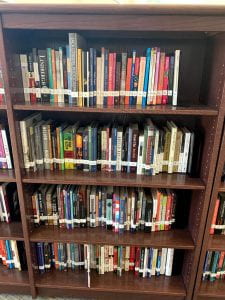
I am a big proponent of weeding. Libraries, especially school libraries, are not archives. Their purpose is not to enshrine books and see how many we collect. School Libraries are a sacred space for students and other stakeholders. In our collections are carefully curated resources that represent a wide range of perspectives, ideas, and ultimately attempt to encapsulate the complexity of the human experience. Weeding is the careful process of ensuring the collection of resources and books in a school library accurately represents its users and affords all learners the opportunity to encounter ideas and information that will challenge their world view and help them refine their own identity and beliefs.
Planning
In July and August, I had several discussions with my principal and library coordinator and began to devise a plan to completely overhaul our nonfiction collection and the space in the middle of the library. With students returning and in desperate need to the human side of school, our vision for the library began to emerge. My amazing principal generously agreed to purchase some new flex seating that we needed due to the wear and tear of the old furniture making much of it unusable. He had graphic artists doing work in other parts of the building, and so he gave me the opportunity to prepare some ideas for additional graphics. Then again, he generously funded painted graphics on 4 different walls in the library: the Reedy High School on the back wall, One Pride, Many Dreams on the front wall, to big Reedy R’s on the East and West walls, and 2 Reedy double Lions on the front wall arches. He and I shared an important vision for the library space to be student centered, and I am grateful for his support!
In August, I used SketchUp to create a 3D model of my space and shelves in order to try various layouts and designs for the center space of the library. I asked staff, students, administrators, and my coordinator for feedback on the proposed designs, and collectively we settled on the one we felt would create the best access to students and work with the proposed collection spaces.
Moving the Book Cases
I created a sign up for our NHS Members (of which I am a co-advisor of our campus chapter at my school) and asked for 20 student volunteers to assist with moving the shelves. The shelves had designated new homes based on the new space appropriate floor plan SketuchUp had helped me create. I also had to decide based on the books already on the shelves where the shelves should go that would wreak the least amount of havoc on the collection and prevent us having to move every book from that case to another location. On one of my contract days before school started, I had the student volunteers come up and we moved the shelves. Our cases are on wheels, so that was a huge plus for moving them. I had originally thought we would need to move most of the books from the shelves and onto carts before we tried to move them, but pleasantly we discovered that we did not need to remove the books in order to move the shelves since they were on wheels.
After the move of the books shelves, it was time to move the books that needed to be moved to their new physical home, and begin the work of genrefying the nonfiction collection. It took about 2 weeks at the beginning of school to get all the books back in order on the shelves and get the fiction books to the proper shelves for the new plan. My student library aides and I worked very hard to get this done as quickly as possible. We never closed the library during this process, and the collection remained accessible to students and staff, albeit a bit difficult to find specific books.
Weeding & Genrefying Nonfiction
For the next phase, I began evaluating the weeding report from my Mackin Collection Analysis and determined the needed resources to do the necessary weeding. I had also been reading about and learning about how other school librarians had genrefied their nonfiction, so I also had ideas about how to reorganize our nonfiction collection. I reached out to the other 10 Frisco ISD high school librarians, as we often do, to get information about how they had genrefied their nonfiction collections, if they had, and sought any advice they had to offer on a collaborative Google Doc where I was making my plan.
I came up with the following overarching collections to encompass the books in our specific collection that best reflects the current interests and needs of the students I serve. For a more complete breakdown of the topics in each collection click here. The colors indicate the color clear tinted spine labels I purchased for the collections.
Nonfiction Collections
- Arts & Entertainment – RED
- Literature & Poetry – ORANGE
- Beliefs & Society- YELLOW
- History & Government – GREEN
- Science & Medicine- BLUE
- Self- Help & How-To- LIGHT BLUE
- Technology & Video Games – PURPLE
- Space & Other Worldly- LIGHT PURPLE
- Sports & Adventure- GRAY
Other Collections
- Project Lit – BURGUNDY
- Picture Books – FLUOR GREEN
- Manga – ROSE
- Graphic Novels – FLUOR PINK
Again, I contacted my library coordinator and fleshed out my plan with her. She also came to my school to help me envision it and talk through it. I ordered some supplies from Demco: color tinted spine labels, book display easels, and some more clear end cap display shelves. I also designed some shelf labels for the tops of the book shelves in Canva, and sent them off to our Frisco ISD Sign Shop to be printed. The shelf labels would match the colors of the tinted spine labels and help students easily identify the new nonfiction sections. Until these shelf labels came in, we used painters tape with sharpie at the top to indicate what books were on the shelves below.

We created new areas for Manga, Graphic Novels, and our growing Project Lit and picture book collections. As a campus that serves a diverse community of learners with various disabilities and learning levels, we have picture books to support their reading interests and levels and the classrooms that they learn in. I have found too that having a picture book collection is also helpful for many teachers who draw on those works from time to time for various purposes in their classrooms.
I determined our time and energy would be best served if I weeded as we reorganized. Through the September, October, and November months, I put my hands on every single nonfiction and biography book in our collection. I weeded those books based on the following criteria:
- Age of the book
- Number of checkouts
- Content- Was the content something that could easily be found online? Was the content outdated? Was the content appropriate for the community of users I serve? Was the content redundant to more recent and engaging books in the collection?
- Purpose- What purpose- based on 6 years of student interactions, reading habits, and inquiry- would this book serve as part of the overall collection?
For each shelf of nonfiction books, I moved the books to a cart. As I moved them, I did an initial scan of the book and if I thought it should be weeded, I placed the books to be weeded on carts. The books I initially wanted to to keep, I placed on separate carts. I would take the books to be weeded and check them in the system before withdrawing them. My library aides and I then placed WITHDRAWN stickers on the barcode, spine label, and property sticker. I also took certain nonfiction books sets that were not outdated, but were not serving a purpose important to the overall collection and needs of our users for pleasure reading and were duplicate information to our online resources to different departments or classrooms on campus that could use them as resources.
In the next phase of the process, I examined the remaining books and in a second round of evaluations, decided if it was to be weeded or placed into the new genres for nonfiction. If it was getting weeded, I put it on a cart to be withdrawn. If we were keeping it, I gave it a color coded spine label, and placed it on a different cart to be changed in the system. My library aides helped me continue to withdraw books, and they also scanned the books to give them their new Shelf Location in TLC’s LS2 our record management system and online catalog. I had two computer stations set up where all they had to do was copy and paste the new Shelf Location from a Google Slide into LS2 for each item and save it. Also, for ease of future inventory purposes, I decided to keep all nonfiction in the general nonfiction collection code, or local holdings code. After the entire process was done, I also batch edited all biographies to change their local holdings code to nonfiction as well. This created a giant nonfiction section that will be much easier to complete inventory on each year.
I left the call numbers on the books and in the system after their new Collection Name. As the books were stickered and changed in the system, we unloaded the carts into shelves on like colors where the books were slowly being organized from. For the months of September, October, and the early part of November, I systematically moved through the entire collection of nonfiction and biography books with so much help from my student library aides. By the end of the first week in November, we had completed this process. I then began to evaluate approximately how many books were now in each new collection and how many shelves it would take to hold each new collection. I also wanted one side of one case toward the front to be a display for new books as they came in, so I calculated where each new collection should go. We then moved the books one final time to their new home to ensure they would fit and we had enough shelves.
Styling Engaging New Nonfiction Collections

Once the vinyl shelf labels came in, I began the work of grouping the books by topic by shelf. For many of the nonfiction collections, I completely abandoned Dewey and groups the largest collections by topic. As I styled each subsection, I used my label maker to label each shelf and ordered some 4×6 vertical clear sign holders for the shelves. I designed and printed the signs to go inside them to provide visual cues for readers perusing the shelves. I grouped, stacked, and displayed the books on each shelf differently to promote visual interest as well as increase accessibility and interest. The organization of each shelf it varies by shelf. Some shelves (like the 4 shelves of Inspiring Biographies in Arts & Entertainment) are in alpha order. However, some shelves, are in no order if they are just one shelf long. I used my professional judgement on what order to put them in, if any. I want to encourage student browsing, and the more orderly they appear, the less students are likely to explore them.
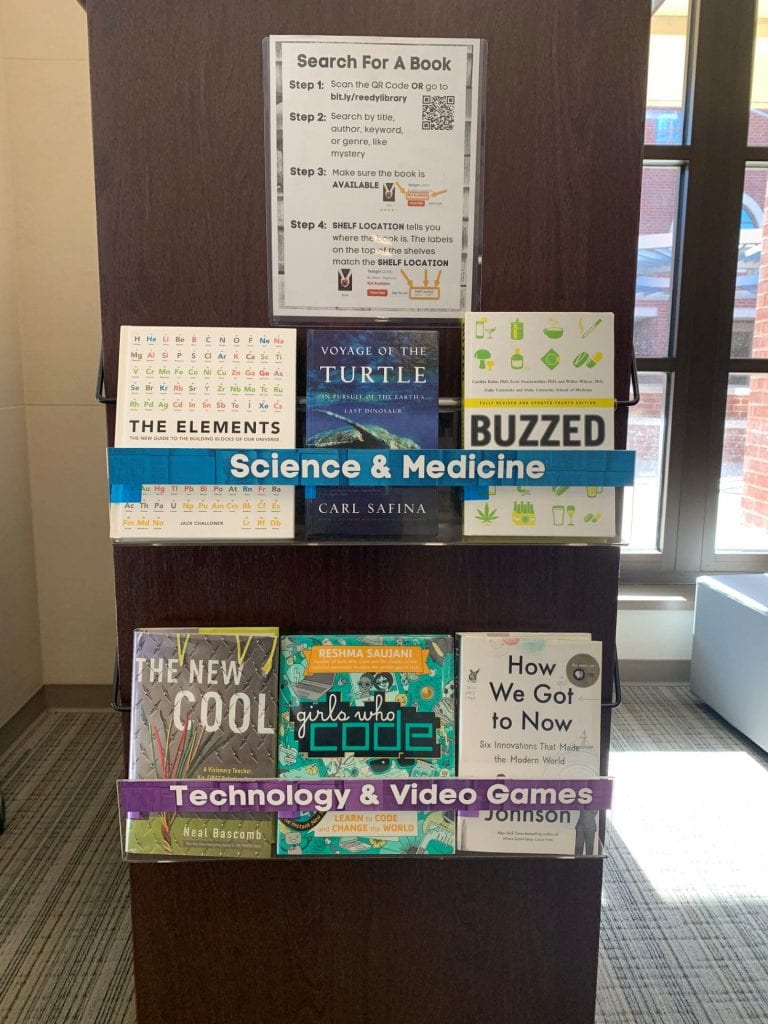
Each fiction as well as each nonfiction section also has a corresponding clear end cap display shelf to create even more interest and highlight each section.
What I came to realize through the years in working with my students, maybe half a dozen times a year I have students ask for a specific nonfiction book. What happens significantly more often is students are looking for something interesting to read or something about a specific topic. The new organization is much more conducive to student browsing and actual student interests than the Dewey classification system which is necessary for large collections that need the ability for quick access to specific titles.
📸 ➡️ For images of all the final stylized shelves, click here.
Online Catalog & Shelf Locations
I would say that 9 out of 10 kids who want a nonfiction book, come in looking for a book on a specific topic or person. So about 1 out of 10 are asking for a very specific title. The organization by genre is meant for browsing and for seeing topics of interest or a eye catching cover in order to entice students to check out nonfiction books. Most of our nonfiction collection has never been checked out before.
When students search the online catalog, they will see a shelf location for the book they are looking for or interested in like in the image below. For the search below I searched dogs, and you can see 3 books in 3 different collections that clearly show where to find that book.

None of our sections are more than four cases and each shelf has a small white label on it indicating what’s on that shelf. The 4×6 signs on many of the shelves also indicate what types of books are on that shelf.
- 4×6 Shelf Signs
- Shelf Labels
A Library is a Growing Organism

Ultimately, through this process I wanted to increase accessibility to the collection. However, another goal was to get students in and around the books more. It was incredibly difficult to see the books or find anything interesting in the organization of Dewey and with the shelves the way they were. By moving to a more bookstore layout for all the books, and styling the shelves the way we have, we are creating more visual interest that ultimately draws students into the collection and increases their engagement with the books by having more books on display on the shelves and decreasing the overall number of books to bring more books into view for our students. Again, students are more likely to browse the shelves if they seem less organized and are set up in ways that appeal to picking up a book and finding out more about it.
As S. R. Ranganathan, considered by many the father of library science, proposed in the Five Laws of library science as foundational to our professional practice:
- Books are for use.
- Every reader his or her book.
- Every book its reader.
- Save the time of the reader.
- A library is a growing organism.
The work that my student library aides and I undertook this school year has been to continue to make our school library purposeful and engaging to our readers and their inquiries. Our library is a growing organism at it continues to embody all that humanity has to offers. As the stories of our collective human history continues to unfurl, and I want to ensure access to that story through the physical books in our collection.
If you are a school librarian who has any additional questions about my process please don’t hesitate to reach out to me. We are always #BetterTogether and I am happy to help or answer any questions you have: [email protected]

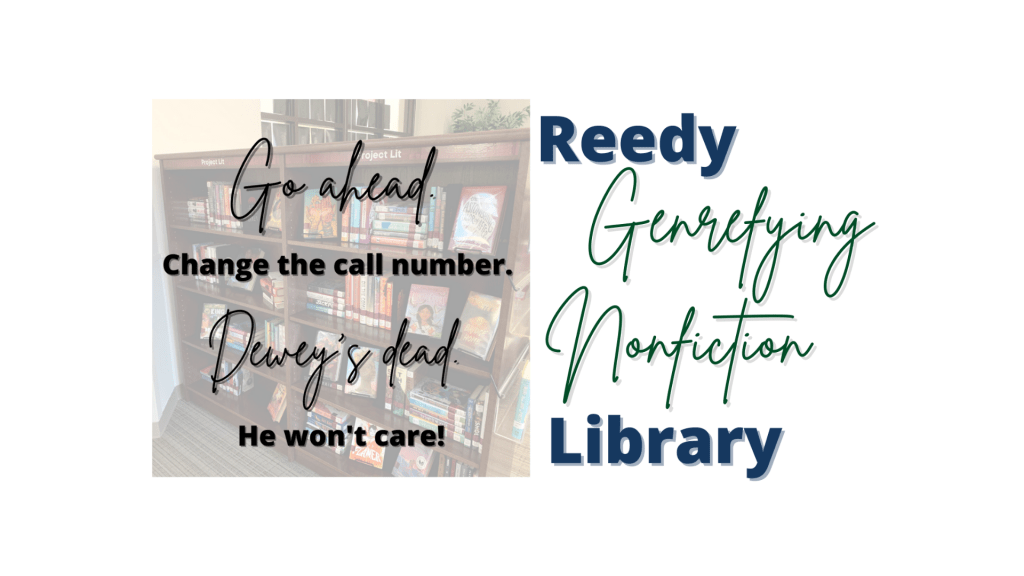



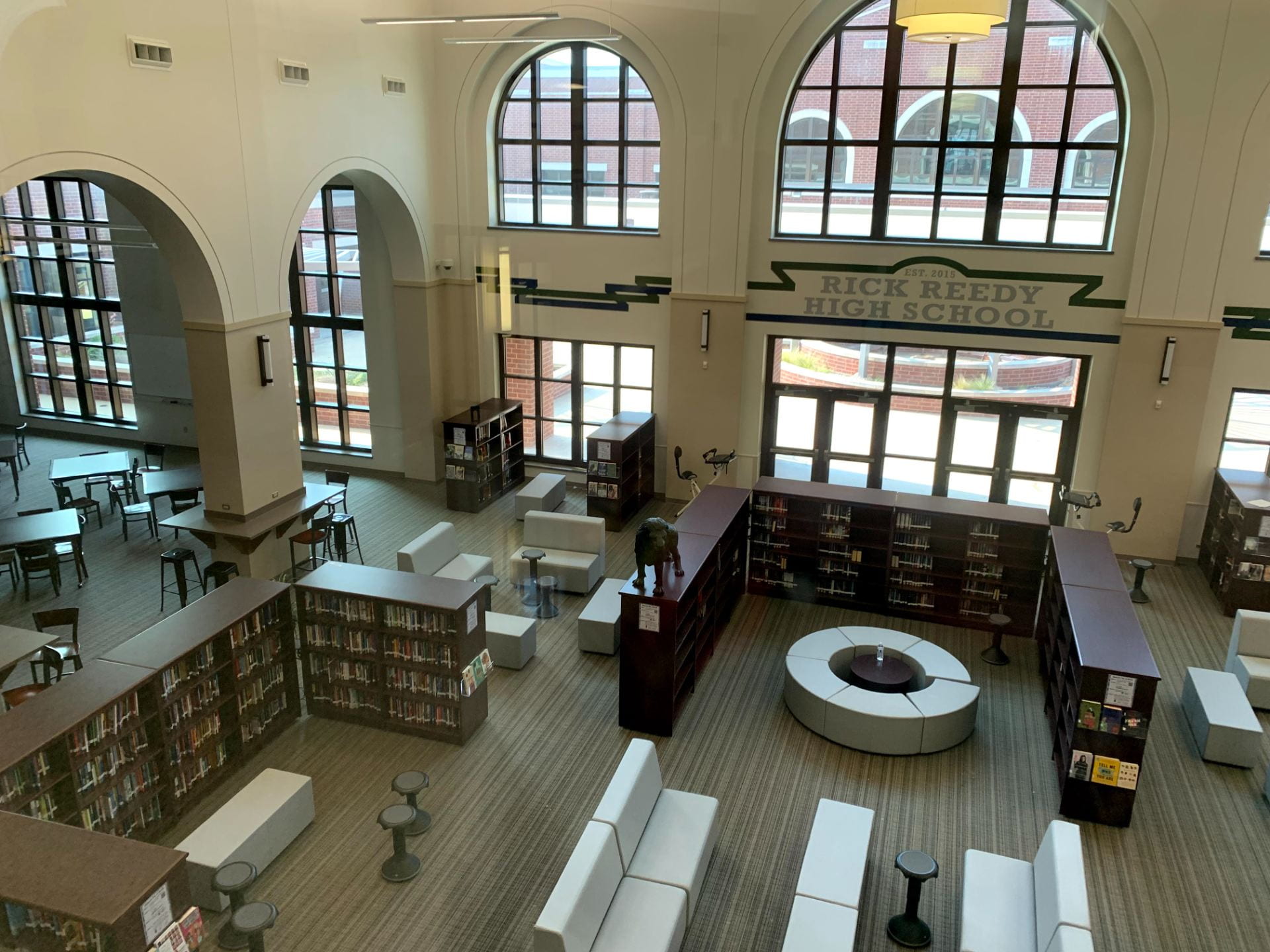

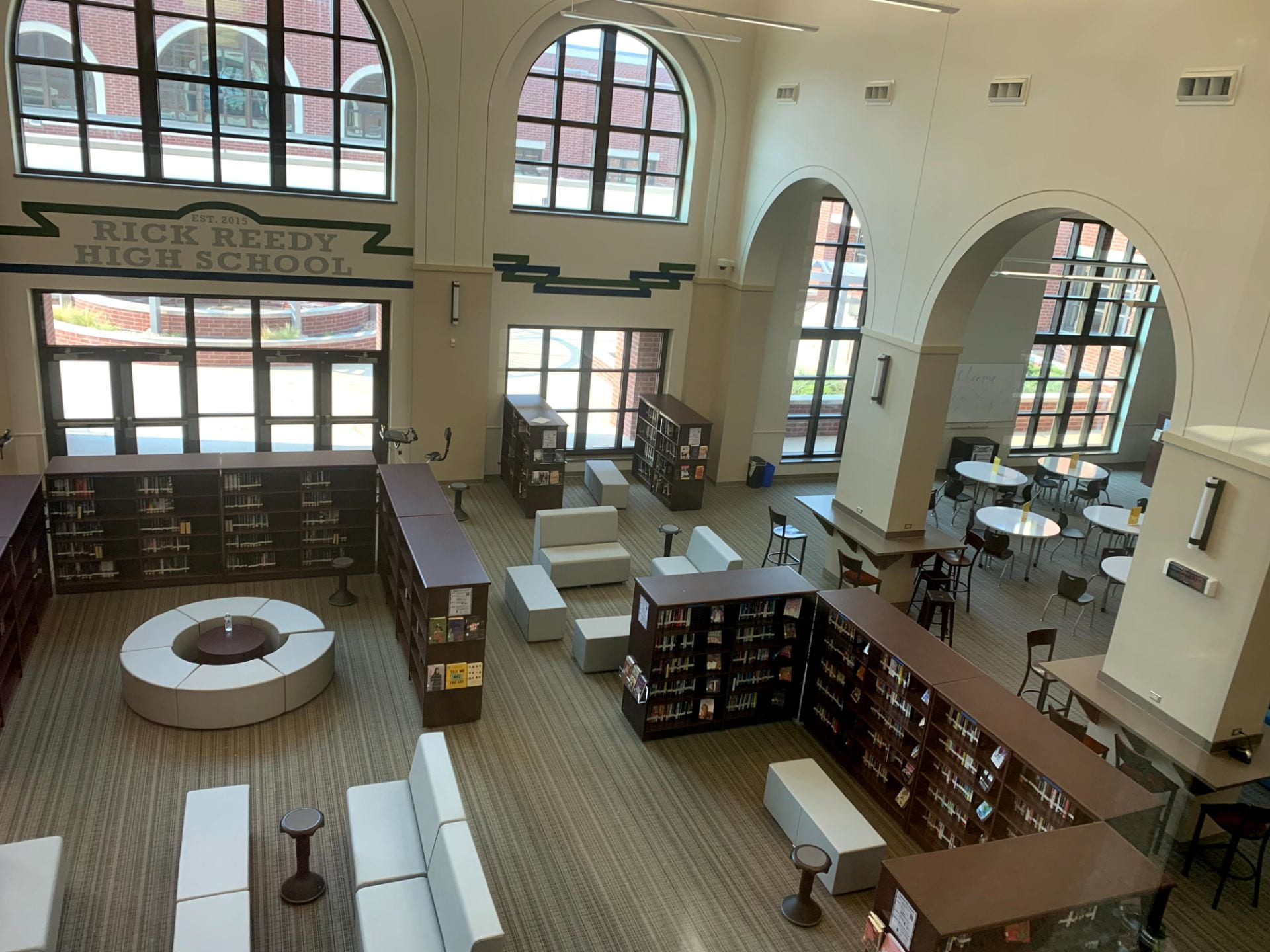



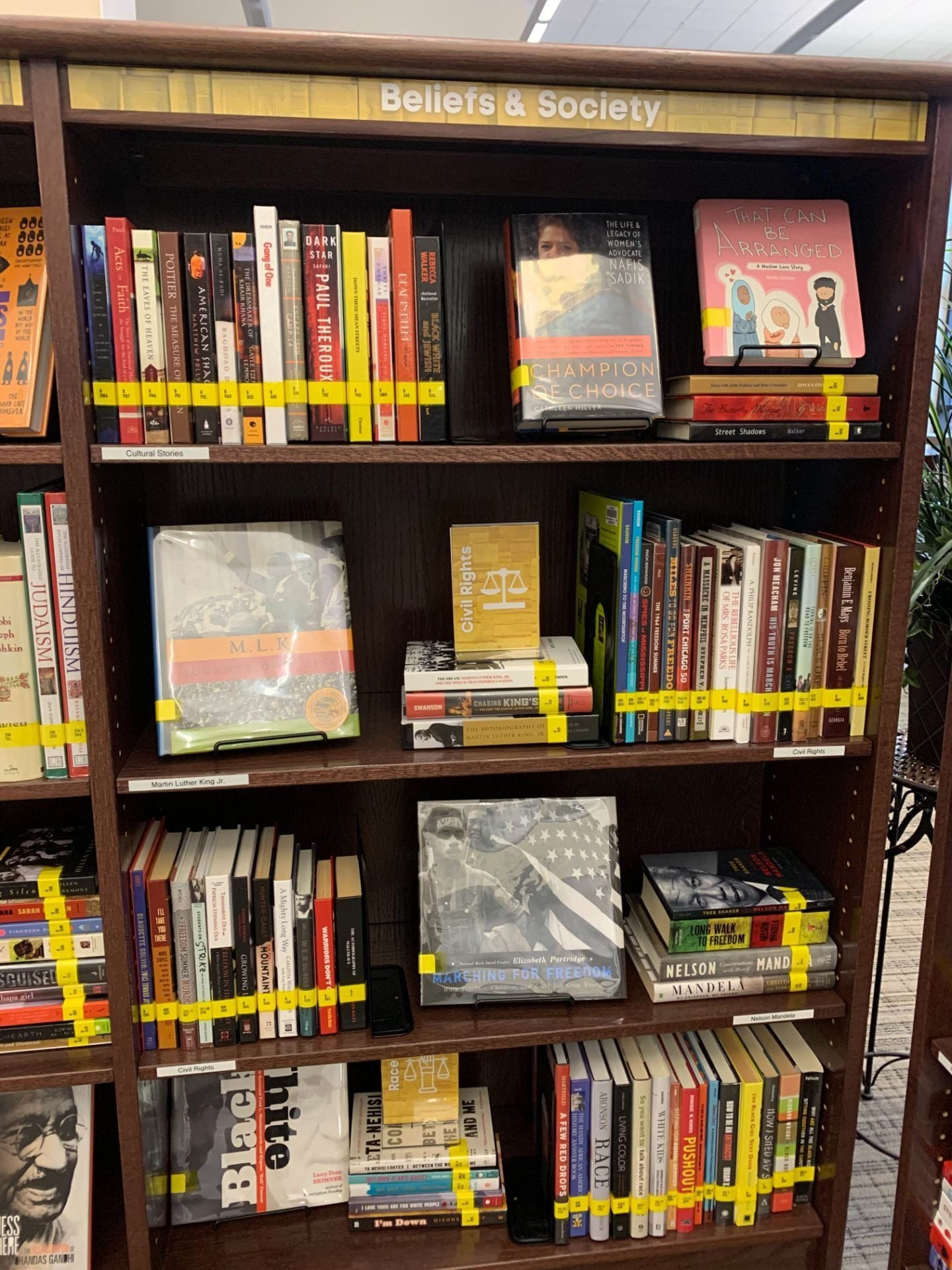




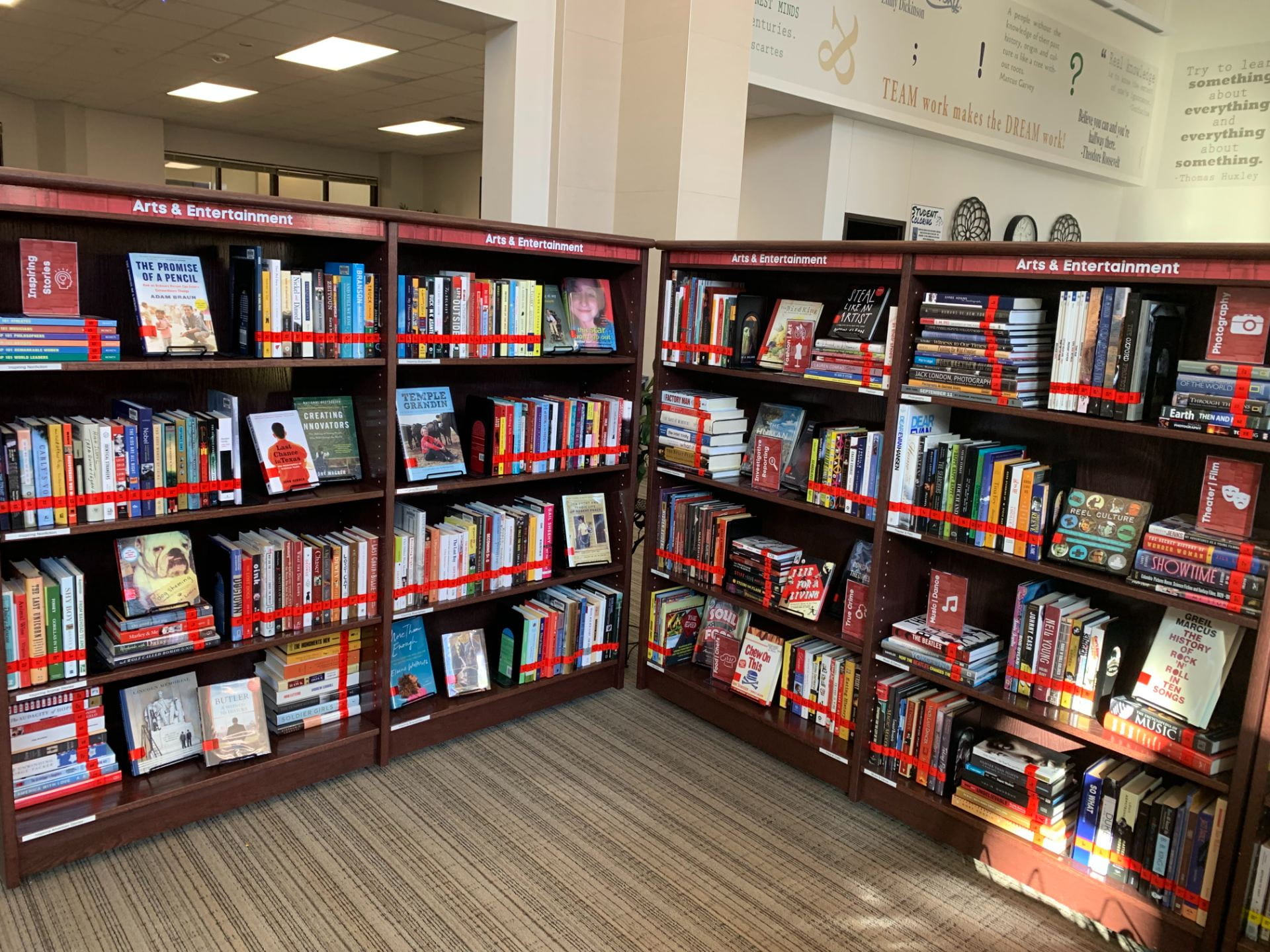

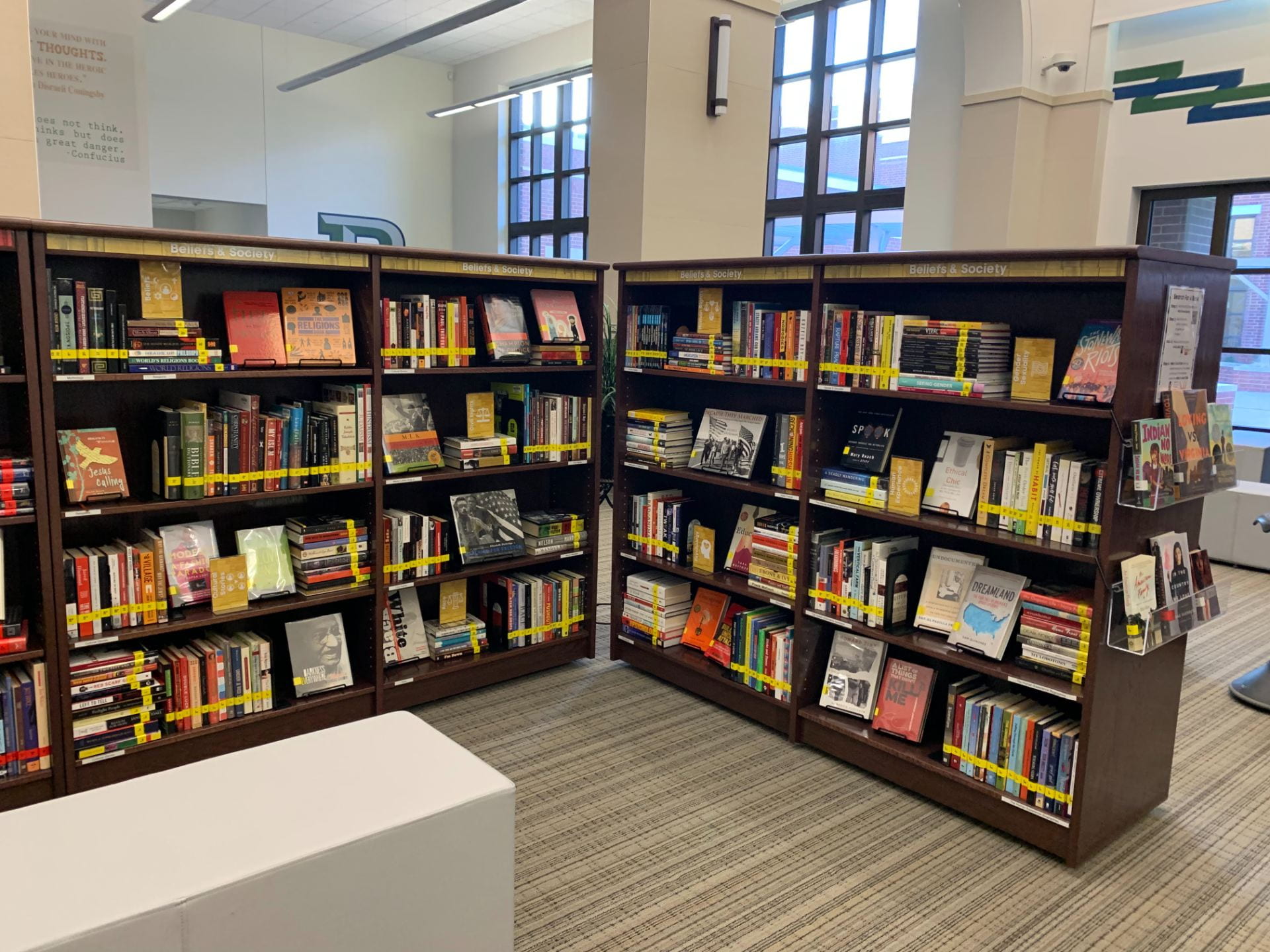
For your shelf location in the catalog…do you make your spine level say the same thing? Your barcode label? Thank you!
Please, what kind of library software do you use? And how did you adapt to your new system?
They mentioned Mackin earlier in the article, so I assume that is her LMS. I have Destiny and can add a shelf location. It looks like Mackin allows you to list where it is located on the shelf.
I hope that helps!
Mackin is a vendor I purchase books from. We use TLC’s LS2 currently.
We use TLC’s LS2. I worked within our current system requirements.
How did you decide which Dewey Decimal numbers went in each category? Do you have a list?
I link the general topics of the books I have in the post. Here is the document I used: